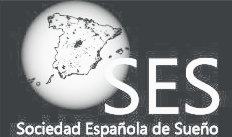Conventional Polysomnography Is Not Necessary for the Management of Most Patients with Suspected Obstructive Sleep Apnea. Noninferiority, Randomized Controlled Trial.
Corral J, Sánchez-Quiroga MÁ, Carmona-Bernal C, Sánchez-Armengol Á, de la Torre AS, Durán-Cantolla J, Egea CJ, Salord N, Monasterio C, Terán J, Alonso-Alvarez ML, Muñoz-Méndez J, Arias EM, Cabello M, Montserrat JM, De la Peña M, Serrano JC, Barbe F, Masa JF; Spanish SleepNetwork. Am J Respir Crit Care Med. 2017 Nov 1;196(9):1181-1190.
Abstract
RATIONALE: Home respiratory polygraphy may be a simpler alternative to in-laboratory polysomnography for the management of more symptomatic patients with obstructive sleep apnea, but its effectiveness has not been evaluated across a broad clinical spectrum. OBJECTIVES: To compare the long-term effectiveness (6 mo) of home respiratory polygraphy and polysomnography management protocols in patients with intermediate-to-high sleep apnea suspicion (most patients requiring a sleep study).
METHODS: A multicentric, noninferiority, randomized controlled trial with two open parallel arms and a cost-effectiveness analysis was performed in 12 tertiary hospitals in Spain. Sequentially screened patients with sleep apnea suspicion were randomized to respiratory polygraphy or polysomnography protocols. Moreover, both arms received standardized therapeutic decision-making, continuous positive airway pressure (CPAP) treatment or a healthy habit assessment, auto-CPAP titration (for CPAP indication), health-related quality-of-life questionnaires, 24-hour blood pressure monitoring, and polysomnography at the end of follow-up. The main outcome was the Epworth Sleepiness Scale measurement. The noninferiority criterion was -2 points on the Epworth scale.
MEASUREMENTS AND MAIN RESULTS: In total, 430 patients were randomized. The respiratory polygraphy protocol was noninferior to the polysomnography protocol based on the Epworth scale. Quality of life, blood pressure, and polysomnography were similar between protocols. Respiratory polygraphy was the most cost-effective protocol, with a lower per-patient cost of 416.7€.
CONCLUSIONS: Home respiratory polygraphy management is similarly effective to polysomnography, with a substantially lower cost. Therefore, polysomnography is not necessary for most patients with suspected sleep apnea. This finding could change established clinical practice, with a clear economic benefit. Clinical trial registered with www.clinicaltrials.gov


